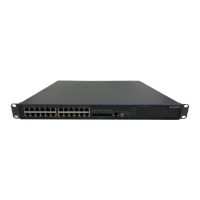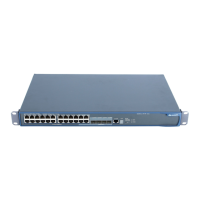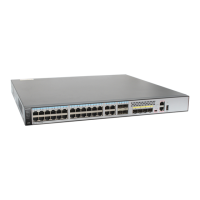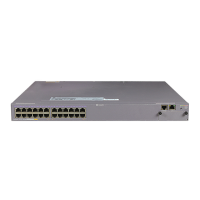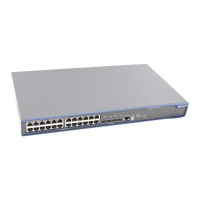Operation Manual – Routing Protocol
Quidway S5600 Series Ethernet Switches-Release 1510 Chapter 4 OSPF Configuration
Huawei Technologies Proprietary
4-1
Chapter 4 OSPF Configuration
4.1 OSPF Overview
4.1.1 Introduction to OSPF
Open shortest path first (OSPF) is a link state-based interior gateway protocol
developed by IETF. At present, OSPF version 2 (RFC 2328) is used, which has the
following features:
z High applicability: OSPF supports networks of various sizes and can support up to
several hundred routers.
z Fast convergence: OSPF can transmit update packets immediately after the
network topology changes so that the change can be synchronized in the
autonomous system (AS).
z Loop-free: Since OSPF calculates routes with the shortest path tree algorithm
according to the collected link states, it guarantees that no loop routes will be
generated from the algorithm basis.
z Area partition: OSPF allows an autonomous system network to be divided into
different areas for convenient management so that routing information transmitted
between the areas is abstracted further, thereby reducing network bandwidth
consumption.
z Equivalent route: OSPF supports multiple equivalent routes to the same
destination.
z Routing hierarchy: OSPF has a four-level routing hierarchy. It prioritizes the routes
as intra-area, inter-area, external type-1, and external type-2 routes.
z Authentication: OSPF supports interface-based packet authentication to
guarantee the security of route calculation.
z Multicast transmission: OSPF supports transmitting protocol packets in multicast
mode.
4.1.2 OSPF Route Calculation
Taking no account of area partition, the routing calculation process of the OSPF
protocol is as follows:
z Each OSPF-capable router maintains a link state database (LSDB), which
describes the topology of the whole AS. According to the network topology around
itself, each router generates a link state advertisement (LSA). Routers on the
network exchange LSAs with each other by transmitting protocol packets. Thus,
each router receives the LSAs of other routers and all these LSAs form the LSDB
of the router.

